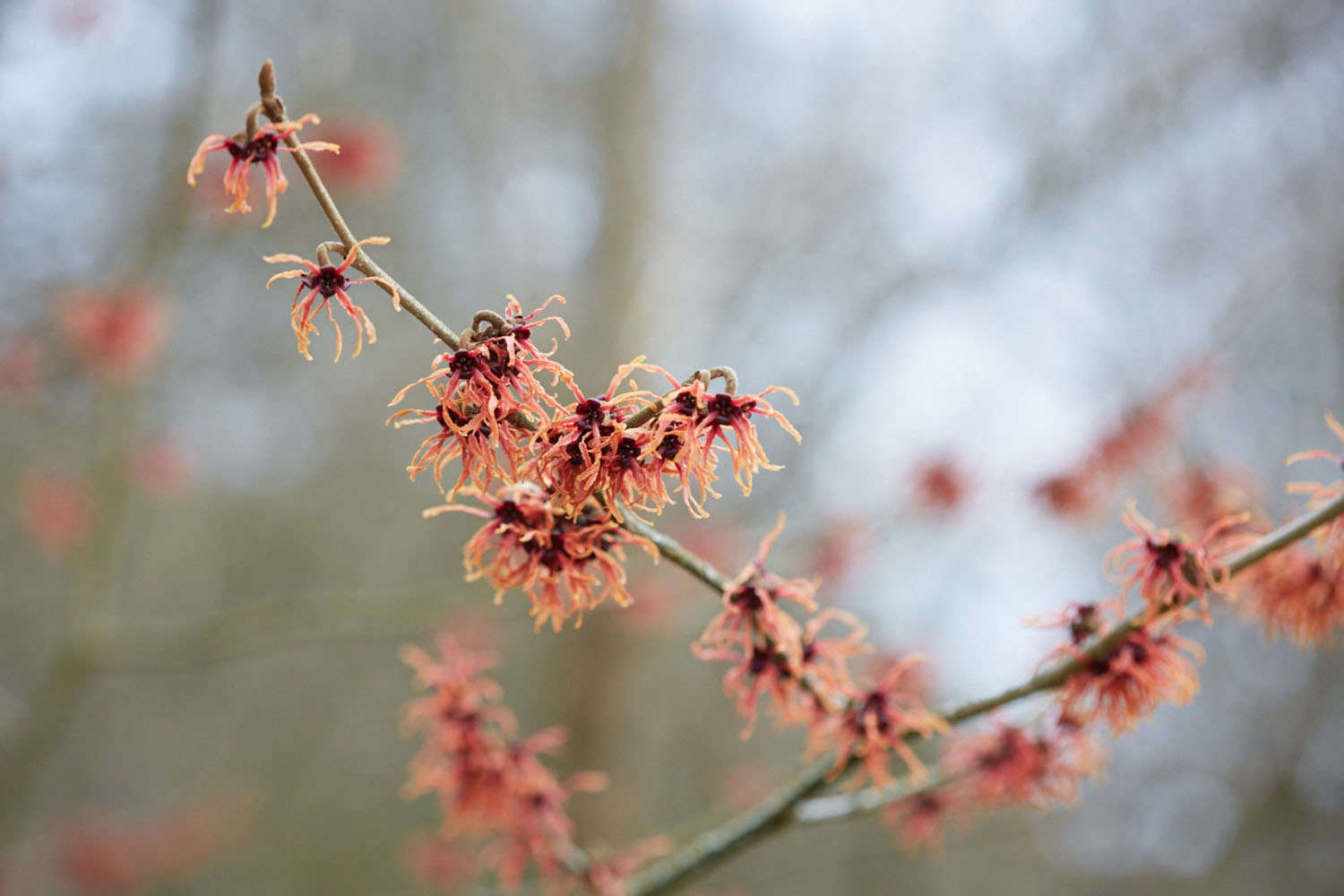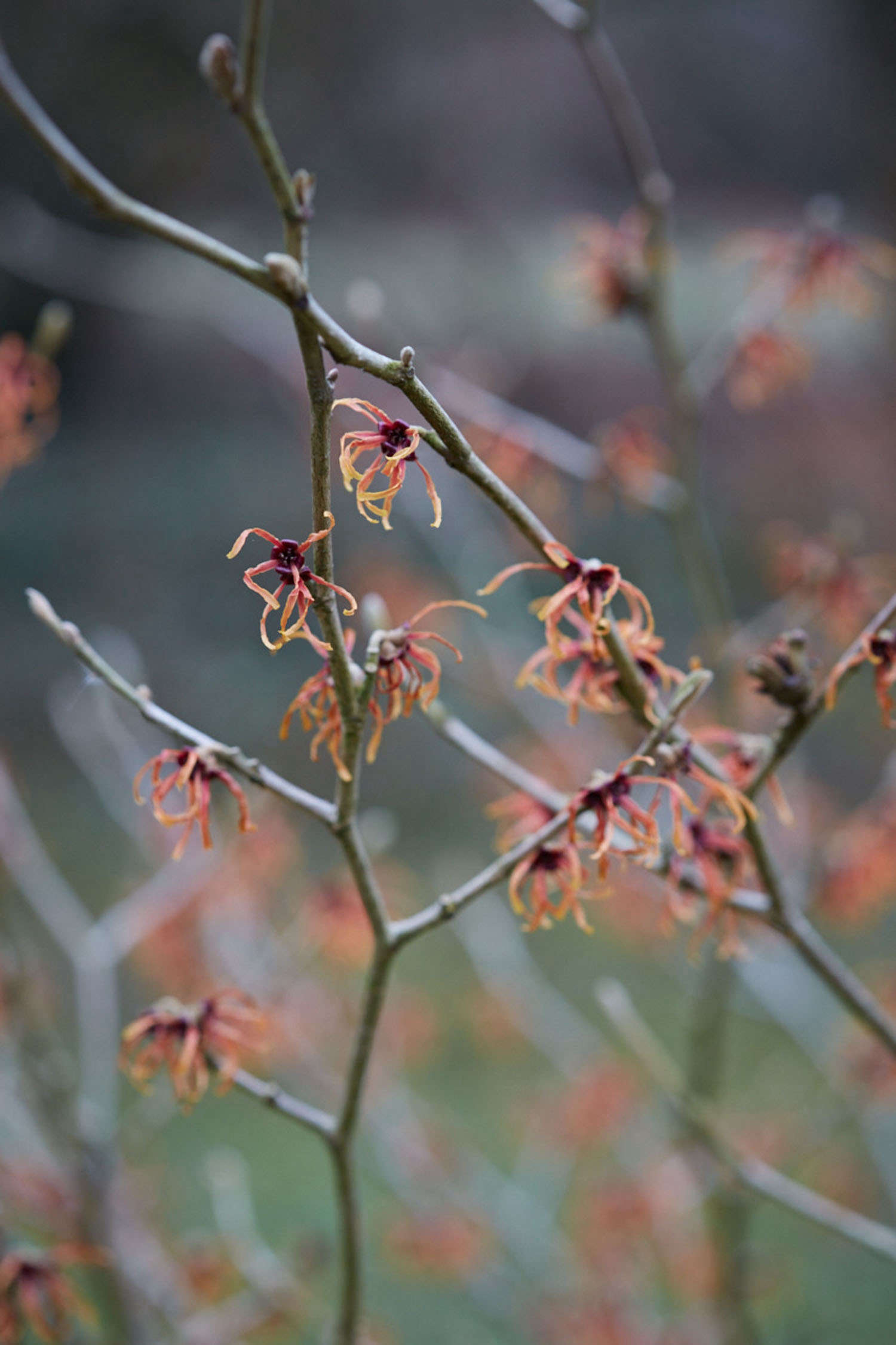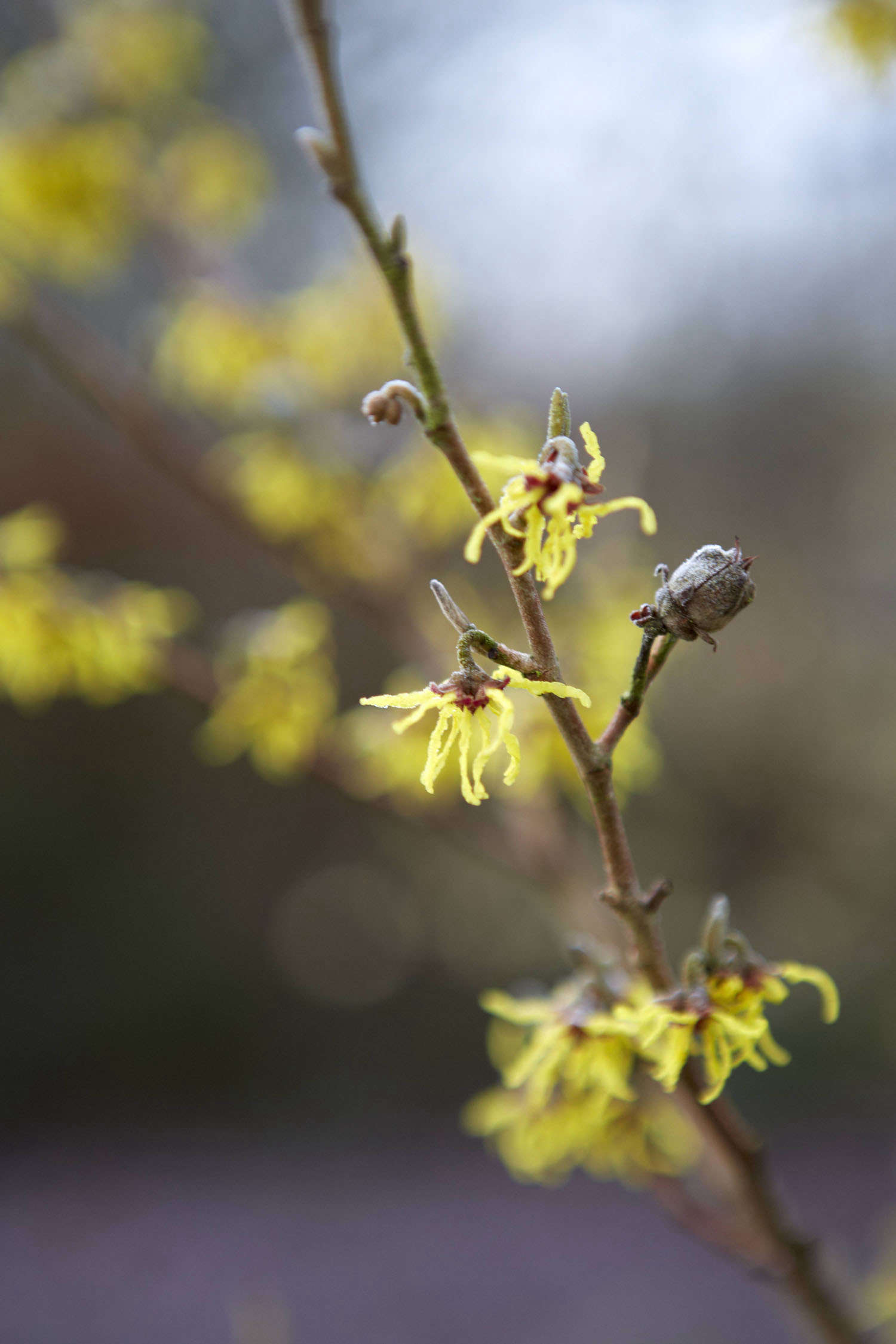Witch Hazel, Hamamelis: “Faith Healer”
Hamamelis has fragrance, as well as arresting looks. In the darkest months of winter, its colors and spicy scent couldn’t be more desirable, and a branch brought indoors is the easiest kind of arrangement. It’s a mystery then, that witch hazels are mainly appreciated by winter garden aficionados. You just need a little patience, and some winter chill, to enjoy the spidery magic.
Photography by Britt Willoughby Dyer.
Above: The word “witch” in the case of witch hazel alludes to the old English word for pliable or bendy. It just happens to have a passing resemblance to hazel.
The wild witch hazel found in the United States, Hamamelis virginiana, has flowers which are not showy but the scent makes itself known in woodland clearings. Its leaves, stems, bark, and wood were boiled down by Native Americans and distilled as “magic water,” and knowledge of its curative powers was passed on to the first settlers.
Above: Hamamelis x intermedia ‘Arnold Promise’ has glowing flowers, scent, and good autumn foliage.
Growing witch hazels in pots increases your options in a smaller garden: backlit flowers in winter, placed by a window, can be wheeled to a less conspicuous place in summer (but keep the pot moist). They do need sunshine for good flowering.
Cheat Sheet
- The best floral colors come from varieties of the hybrid Hamamelis x intermedia.
- Autumn foliage is an attraction that is being bred into newer hybrids, bringing color in fall that is almost as dramatic as the flowers that follow. ‘Jelena’ is one of these; look out also for ‘Vesna’, ‘Frederic’, and ‘Diane’.
- Witch hazel is a large shrub that can become a small tree. Like hazel (no relation), it can be kept in check through pruning.
Keep It Alive
- Flower production is immune to cold but plants do need sheltered sun. Wind can be fatal; at any rate it will carry away the scent. Hardy to zones 5-8.
- Good soil moisture in summer is more important than levels of acidity (it generally prefers neutral to acid). However, Hamamelis doesn’t like to be waterlogged and needs good drainage. Conserve moisture through mulching.
- Be patient: witch hazels take a while to settle in and won’t grow much for the first few years. Expect 10 feet or slightly more after 10 to 20 years.
Above: Best witch hazels for color: Yellow will glow best in the gloom but if you place witch hazel where it will be backlit in the low sun, burnt orange and intense red are spectacular. Yellows: ‘Pallida’, ‘Barnstedt Gold’, ‘Jermyn’s Gold’. Oranges: ‘Aphrodite’, ‘Vesna’, ‘Gingerbread’. Best reds: ‘Diane’, ‘Livia’.
Above: The best scents come from varieties of the Chinese witch hazel, Hamamelis mollis; look for ‘Boskoop’ and ‘Jermyn’s Gold’. Of the hybrids, choose from scented ‘Aphrodite’ (orange-red), ‘Aurora’ (gold-orange), and ‘Arnold Promise’ (Shown).
Above: Hamamelis x intermedia ‘Jelena’. As leaves drop in autumn, buds become more noticeable as they prepare for witch hazel’s glory time: deep winter.
N.B.: To learn more shrubs to add interest to a winter garden, our Garden Design 101 guides can help.
- See Mahonia 101 for tips on planting, care, and design.
- Need something a bit larger? Consider Smoke Bush 101, Which can be a shrub or a small tree.



















Have a Question or Comment About This Post?
Join the conversation (3)